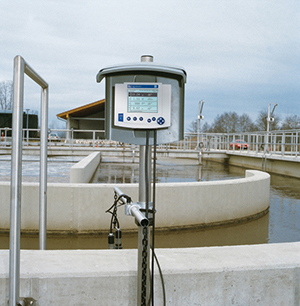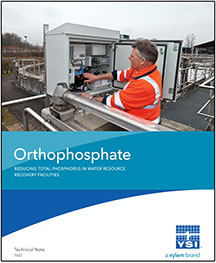Monitoring & Control Instrumentation in Wastewater
Our process control experts have been busy traveling around the United States, visiting hundreds of water resource recovery facilities and engineers. During those visits, we have been asked questions about process monitoring and control. We narrowed these questions down to three. These three were the most frequently asked questions over the past few months.
Question 1:
I am using dissolved oxygen (DO) sensors to control the level of oxygen in the aeration tank. I have heard about ammonia-based aeration control, how does it work?
Answer:
There are a few different control strategies that a facility could use. You can use the feed- forward or feedback control strategies. Feed-forward, sometimes written feedforward, is a term describing an element or pathway within a control system that passes a controlling signal from a source in its external environment, often a command signal from an external operator, to a load elsewhere in its external environment.
forward or feedback control strategies. Feed-forward, sometimes written feedforward, is a term describing an element or pathway within a control system that passes a controlling signal from a source in its external environment, often a command signal from an external operator, to a load elsewhere in its external environment.
A control system that has only feed-forward behavior responds to its control signal in a pre-defined way without responding to how the load reacts. This differs from a system that also has feedback, which adjusts the output to take account of how it affects the load, and how the load itself may vary unpredictably; the load is considered to belong to the external environment of the system.
Feedback occurs when outputs of a system are routed back as inputs as part of a chain of cause-and-effect that forms a circuit or loop. The system can then be said to "feedback" into itself. Each strategy would use an ammonium sensor that will monitor the ammonia level for aeration control, maximizing efficiency while minimizing energy costs. While aeration control with DO measurements is a great start to improving your plant's energy efficiency, controlling from the ammonia measurements can help improve your process even more.
Additional Resources on aeration control:
White Paper: Activated Sludge Aeration Control with Online Sensors. Get your copy now.
Webinar: Controlling Aeration Costs. Watch Now.
Question 2:
I run lab samples of TSS every day on my MLSS, RAS and WAS. We use the measurements for process control. Is there a better way to monitor TSS in the process?
Answer:
The YSI IQ SensorNet TSS probe will allow you to continuously monitor TSS in open tanks or in-pipe (with an insertion assembly). The IQ SensorNet TSS probe has built-in UltraClean™ ultrasonic cleaning that keeps the sensing optics free of fouling without the use of a mechanical wiper or secondary air cleaning. UltraClean ensures accurate measurements while minimizing manual cleaning requirements and maintenance costs.
Additional Resources on process monitoring:
White Paper: Implementation of Solids Retention Time (SRT) Control in Wastewater Treatment. Get your copy now.
Webinar: Activated Sludge - 3 Things You Need To Know. Watch Now.
Question 3:
My facility is preparing for new phosphorus discharge limits that are being added to our permit. I am able to remove some phosphorus biologically but sometimes I need to add chemicals to reach the new limit. How do I  know when I need to dose chemicals so I can meet the new discharge limit without over-dosing? I don't want to dose chemicals and add the expense to the process when the bio-P removal is enough.
know when I need to dose chemicals so I can meet the new discharge limit without over-dosing? I don't want to dose chemicals and add the expense to the process when the bio-P removal is enough.
Answer:
As mentioned in the question, there are two strategies for removing Phosphorus: biological and chemical. YSI offers an orthophosphate analyzer, the P700, that will allow you to continuously monitor the phosphorus levels in your process. This helps determine if you are meeting your permit and allows you to control chemical addition when necessary, based on the measurement.
Additional Resources on phosphorus removal:
Technical Note:Orthophosphate Reducing Total Phosphorus in Water Resource Recovery Facilities. Download your copy now.
Application Note: Monitoring Orthophosphate For Reduced Chemical Costs With The YSI IQ SensorNet. Download your copy now.
Webinar: The Essentials of Phosphorus Removal in Wastewater. Watch Now.
Phosphorus in Wastewater eBook. Download your copy now.
Additional Blog Posts of Interest:
Wastewater Process Control-Which Strategy is Right for You?
Dr. Smith Travels in the World of Wastewater
Monitoring Orthophosphate for Reduced Chemical Costs in Water Resource Recovery Facilities
Enhanced WWTP Performance & Reduced Operating Costs | Online Monitoring and Control